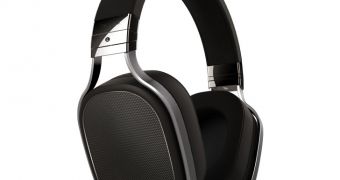Audio products may not be acclaimed in the news as often as graphics cards and CPUs, at least not in terms of gaming prowess and suitability, but they are essential for entertainment. OPPO Digital intends to exploit that for all it's worth.
The two new products from the Silicon Valley company are called PM-1 Planar Magnetic Headphones and HA-1 Headphone Amplifier.
The former uses a new type of planar magnetic technology, with a merger of “natural, dynamic, and engaging sound” at a reduced weight and better comfort.
In planar drivers, sound is produced by a very thin and light diaphragm driven evenly over the entire radiating area. It ensures coherence of sound when entering the ear, unlike dynamic headphone drivers.
The diaphragm also has a spiraling pattern optimized for maximum driving force (sensitivity) and consistency of the applied force over the radiating area.
Technical jumbo aside, OPPO's new headset uses very high energy Neodymium magnets as part of an FEM optimized magnet system.
Essentially, the PM-1 should be perfect for an audiophile hi-fi system or paired with high resolution portable devices.
Meanwhile, the OPPO HA-1 Headphone Amplifier borrows from the style used by OPPO's universal Blu-ray Disc players.
According to the company, it approaches the measurable limit of audio analyzing instruments, when it comes to performance.
It can double as an asynchronous USB DAC too, a digital audio dock for mobile devices, even a Bluetooth audio transport.
Inside are linear power regulators and filters with custom made capacitors, a 4-pin balanced XLR, a traditional quarter-inch headphone jack, line level analog inputs and outputs (both RCA and balanced XLR sockets) and built-in monitoring and protection circuitry (short-circuiting, overloading, and DC offset).
Inputs include coaxial, optical, balanced AES/EBU, and an asynchronous USB DAC. Soon, phones and tablets should work as well as PCs on it. Sadly, OPPO Digital didn't say what prices it wanted paid for the newcomers.

 14 DAY TRIAL //
14 DAY TRIAL //